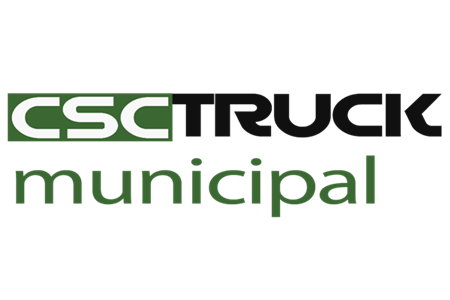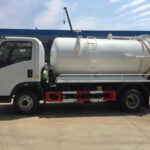In an era increasingly focused on sustainability and environmental responsibility, waterless sweeper trucks have emerged as innovative solutions for road cleaning, offering municipalities and commercial entities a means to maintain cleanliness while significantly reducing water consumption. These advanced vehicles not only enhance the efficiency of street maintenance but also align with broader ecological goals, minimizing the environmental impact associated with traditional cleaning methods. This article delves into the features, operational benefits, technological advancements, and the future of waterless sweeper trucks in the realm of urban maintenance.
Understanding Waterless Sweeper Technology
Design and Functionality
Waterless sweeper trucks are specifically engineered to clean roads and public spaces without the need for water, employing a variety of mechanisms to effectively remove debris, dust, and other pollutants. Utilizing high-efficiency suction systems combined with powerful brushes, these trucks can capture and collect waste materials directly from the pavement, ensuring that roads remain clean and safe for pedestrians and vehicles alike. The design typically features a compact body that allows for maneuverability in tight spaces, making them particularly suitable for urban environments.
Mechanisms of Operation
The operation of waterless sweepers relies on advanced technologies, including vacuum suction and specialized brushes that work in tandem to lift and collect dirt and debris. The brushes rotate at high speeds, dislodging particles from the surface while the suction system captures them and transfers them into a debris hopper located within the vehicle. This process not only removes visible litter but also significantly reduces dust emissions, making waterless sweepers an effective solution for maintaining air quality in densely populated areas.
Advantages of Waterless Sweeper Trucks
Environmental Sustainability
One of the most compelling benefits of waterless sweeper trucks is their significant reduction in water usage. Traditional street cleaning methods often require substantial amounts of water, contributing to resource depletion and higher operational costs. By eliminating the need for water, these trucks support sustainable practices, aligning with the growing global emphasis on conserving water and protecting natural ecosystems. This is particularly critical in regions facing water scarcity, where efficient resource management is essential.
Improved Air Quality
In addition to reducing water consumption, waterless sweepers play a vital role in improving air quality in urban areas. Traditional sweeping methods can stir up dust and particulate matter, which can negatively impact public health, particularly for vulnerable populations such as children and the elderly. Waterless sweepers, on the other hand, effectively capture dust and debris before they can become airborne, contributing to cleaner air and healthier living environments. This capability is crucial in combating air pollution and mitigating the health risks associated with particulate matter.
Cost-Effectiveness
While the initial investment in waterless sweeper technology may be higher than that of traditional street cleaning equipment, the long-term operational savings can be substantial. The elimination of water usage not only reduces utility costs but also minimizes the need for water disposal and treatment services. Furthermore, the efficient collection of debris means that road maintenance can be carried out more quickly and effectively, leading to reduced labor costs and increased productivity for municipal workers.
Operational Features of Waterless Sweepers
User-Friendly Controls and Navigation
Modern waterless sweeper trucks are equipped with advanced control systems that enable operators to easily manage the sweeping process. With intuitive interfaces, operators can adjust the speed of the brushes, control suction power, and monitor the level of debris in the hopper, ensuring that the vehicle operates at peak efficiency. Additionally, many models feature GPS navigation and route optimization capabilities, allowing for effective planning and execution of cleaning routes in urban settings.
Versatility for Various Applications
Waterless sweeper trucks are not limited to road cleaning; they are versatile vehicles suitable for various applications, including parking lots, sidewalks, and public parks. Their ability to operate in diverse environments makes them valuable assets for municipalities and private companies alike. By tailoring their use to specific areas, operators can maximize efficiency and maintain cleanliness across multiple types of spaces, thus enhancing the overall appearance and hygiene of urban environments.
Enhanced Safety Features
Safety is a paramount concern in urban maintenance, and waterless sweepers are designed with various features to protect both operators and the public. Many models include rearview cameras and sensors to assist with maneuvering in tight spaces, reducing the risk of accidents. Additionally, safety lights and reflective markings ensure visibility during nighttime operations, allowing the vehicles to be safely integrated into the busy urban landscape.
Environmental Impact and Sustainability Goals
Contribution to Urban Sustainability
As cities strive to achieve sustainability goals, waterless sweeper trucks represent a significant advancement in environmentally friendly maintenance solutions. By effectively removing debris and pollutants without consuming water, these trucks contribute to the overall cleanliness and aesthetic appeal of urban areas. This enhanced cleanliness not only improves public health but also encourages community engagement and pride, fostering a sense of ownership among residents regarding their local environment.
Integration with Broader Waste Management Strategies
Waterless sweepers can be integrated into comprehensive waste management strategies that include recycling and waste reduction initiatives. By effectively removing litter and debris from public spaces, these vehicles support community efforts to maintain cleanliness, thereby enhancing the effectiveness of recycling programs and reducing the likelihood of contamination in recyclable materials. This integration further underscores the importance of cohesive approaches to urban sustainability, emphasizing the role of waterless sweepers in achieving broader environmental objectives.
Regulatory Compliance and Incentives
As governments around the world implement stricter environmental regulations, waterless sweeper trucks can help municipalities comply with these standards. The ability to minimize water usage and reduce emissions positions these vehicles favorably in the context of regulatory compliance, enabling cities to meet or exceed environmental requirements. Additionally, many regions offer incentives for adopting eco-friendly technologies, further encouraging municipalities to invest in waterless sweeper solutions as part of their sustainability initiatives.
Challenges and Considerations
Initial Investment and Budget Constraints
Despite their numerous advantages, the initial investment required for waterless sweeper trucks can pose challenges for municipalities with budget constraints. While the long-term savings may justify the expense, cities must carefully evaluate their budgets and consider potential funding sources to support the acquisition of this advanced equipment. This financial consideration can be a significant barrier, especially for smaller municipalities with limited resources.
Maintenance and Training Requirements
Like any specialized equipment, waterless sweepers require regular maintenance to ensure optimal performance and longevity. Municipalities must establish comprehensive maintenance protocols to address wear and tear, particularly for the suction and brush systems. Additionally, training programs for operators are essential to maximize the effectiveness of the vehicles and ensure safe operation. This investment in training and maintenance is critical for municipalities looking to fully leverage the benefits of waterless technology.
Technological Advancements and Market Options
As technology continues to evolve, municipalities must stay abreast of advancements in waterless sweeping solutions. The market offers a range of options, from compact models suitable for narrow streets to larger units designed for high-volume cleaning. City planners and waste management officials must evaluate their specific needs and operational contexts when selecting the most appropriate vehicles for their fleets, considering factors such as size, capacity, and operational capabilities.
Case Studies of Successful Implementations
Urban Areas Leading the Charge
Several urban areas have successfully implemented waterless sweeper trucks as part of their cleaning strategies, yielding positive results in terms of cleanliness, air quality, and operational efficiency. For instance, cities that have integrated these vehicles into their waste management programs report not only improved public spaces but also enhanced community satisfaction and engagement. These case studies serve as examples for other municipalities seeking to adopt similar environmentally friendly practices.
Positive Outcomes in Public Health and Safety
Municipalities that have adopted waterless sweeper trucks have also noted improvements in public health outcomes due to enhanced air quality and reduced litter in public spaces. The effective removal of debris contributes to a cleaner environment, which can positively impact community well-being, particularly for individuals with respiratory issues or other health concerns. These outcomes reinforce the importance of investing in sustainable technologies for the betterment of urban populations.
Future Trends in Waterless Sweeping Technology
Innovations in Suction and Brush Technology
As the demand for eco-friendly cleaning solutions continues to grow, manufacturers of waterless sweeper trucks are likely to invest in innovations that enhance suction and brush technologies. Future models may incorporate advanced materials and designs that improve debris collection efficiency, reduce maintenance requirements, and increase overall durability. These advancements will further solidify the role of waterless sweepers as indispensable tools in urban maintenance.
Integration of Smart Technologies
The future of waterless sweeper trucks may also see the integration of smart technologies, such as AI-driven route optimization and data analytics for real-time performance monitoring. These technologies can enable operators to collect valuable data on cleaning efficiency, debris types, and operational costs, allowing for continuous improvement and more informed decision-making regarding urban maintenance strategies. This data-driven approach aligns with the broader trend of smart city initiatives, emphasizing the importance of technology in enhancing urban living.
Customization for Diverse Needs
As cities grapple with diverse waste management challenges, the demand for customizable waterless sweeper solutions is likely to rise. Manufacturers may begin to offer tailored options that allow municipalities to adapt their vehicles for specific applications, such as enhanced capabilities for construction sites or specialized attachments for various types of debris. This adaptability will ensure that waterless sweepers remain effective across a range of urban environments and maintenance needs.
In summary, waterless sweeper trucks are revolutionizing the approach to road cleaning by providing eco-friendly, efficient, and effective solutions for municipalities and commercial enterprises alike. As the technology continues to evolve, these vehicles will play an increasingly vital role in maintaining cleanliness and sustainability in urban areas, aligning with global efforts to promote environmental stewardship and responsible resource management. Their significance in the landscape of urban maintenance underscores the importance of embracing innovative technologies that prioritize both cleanliness and ecological responsibility.







